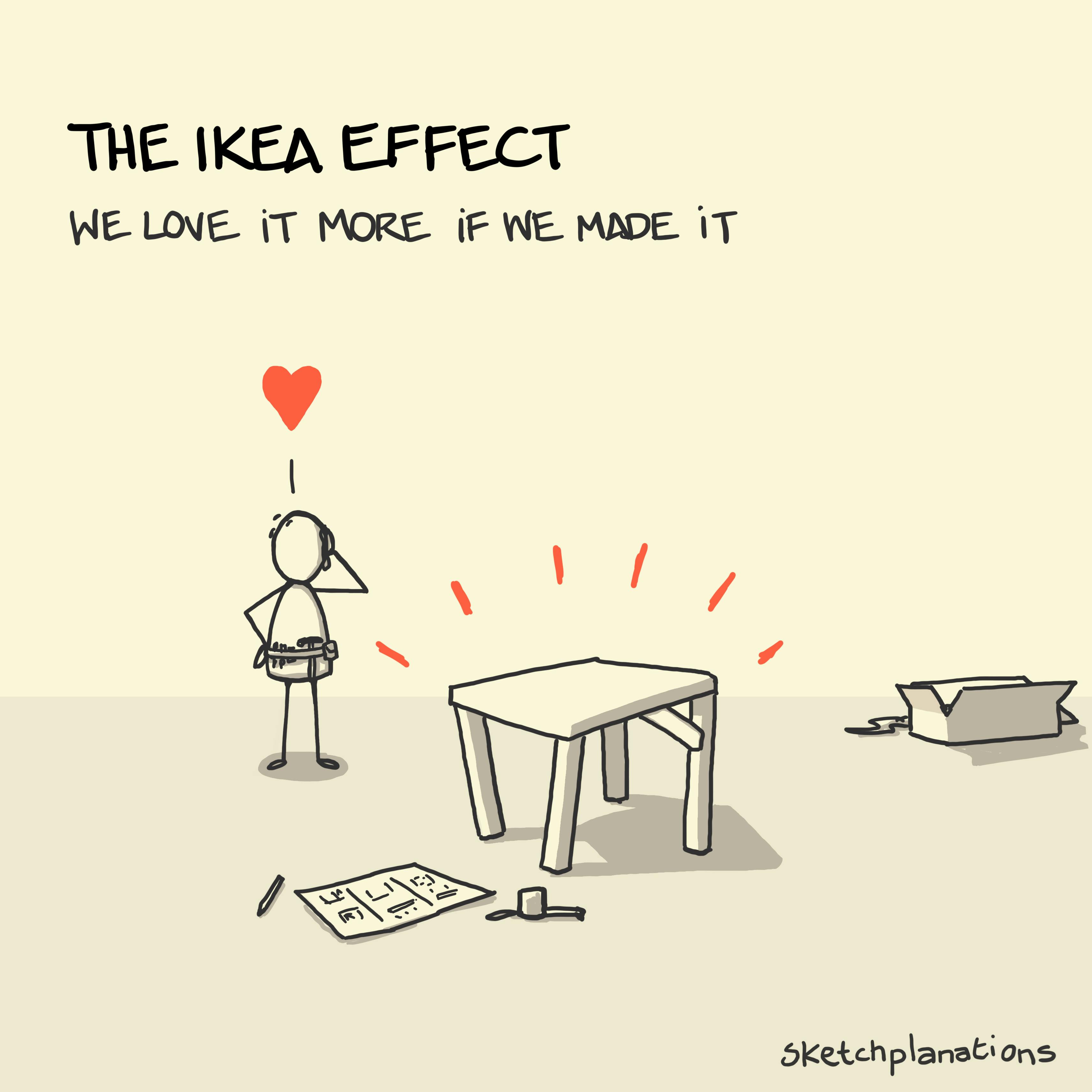The IKEA effect

- Prints
- Copied!
👇 Get new sketches each week
The IKEA effect is the increase in value we feel towards self-made products—products that required our effort to create them. Or, less formally, we love it more if we made it.
The effect is named after the odd sense of satisfaction many of us feel after spending more time and sweat than expected putting together IKEA's famous flat-pack creations. Yet not only does more effort equal more love. If we've put effort into something ourselves, we're also more likely to, often mistakenly, think that others will value it more, just as we do.
Together with others, Dan Ariely, a professor of behavioral economics, conducted several experiments leading to these conclusions.
Ariely also points out that kids are the ultimate expression of the IKEA effect: they're very hard, don't come with instructions and take a lot of effort.
Watch Dan Ariely do a great job explaining some experiments that lead to this conclusion , or read the full paper, The “IKEA effect”: When Labor Leads to Love (pdf), Norton, Mochon, Ariely HBS working paper, 2011.
Related Ideas to the IKEA Effect
- The Betty Crocker Effect, or ‘the egg theory.’

